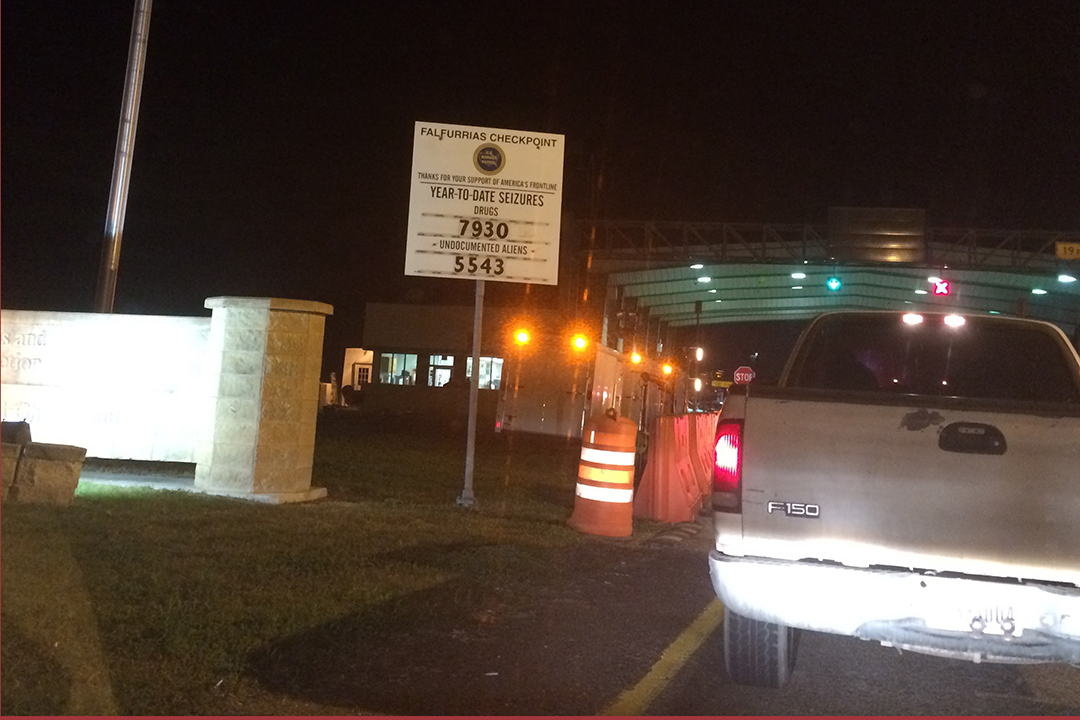Drug seizures drop nearly 90 percent at Border Patrol checkpoint, state says
Drug seizures at the Falfurrias checkpoint dropped nearly 90 percent from 2014 to 2017, according to the Texas Department of Public Safety.
Director Steve McCraw dropped the startling statistic in April, when he briefed the Public Safety Commission on border security data. Minutes for the meeting, which the Public Safety Commission approved in June, provided exact percentages.
 Drug seizures at the Falfurrias checkpoint dropped 87.77 percent, according to the meeting minutes. Drug seizures at the Sarita checkpoint plummeted too, falling 78.69 percent during the four-year period.
Drug seizures at the Falfurrias checkpoint dropped 87.77 percent, according to the meeting minutes. Drug seizures at the Sarita checkpoint plummeted too, falling 78.69 percent during the four-year period.
Hidalgo County Sheriff Eddie Guerra said the numbers reflected a major shift by smugglers.
“These organizations are making more money smuggling humans than smuggling narcotics,” Guerra said.
Big drug busts became less common when Colorado and other states legalized marijuana, Guerra said. Measured by weight, marijuana made up the majority of drug seizures.
“You’re not seeing those big loads,” Guerra said, adding that some smugglers shifted to heroin and methamphetamine. “They’ll make more money and it’s a much smaller drug to conceal.”
During the April meeting, McCraw said Border Patrol — which doesn’t publish statistics for individual checkpoints — provided the data.
“Legislators also asked us to report on marijuana seizures in the Rio Grande Valley,” McCraw said. “And this is Border Patrol data that we used. And as you can see, there was a 60 percent reduction during that period of time. In cocaine, there’s a 26 percent reduction.”
McCraw credited Operation Secure Texas, the state border security program spearheaded by the Department of Public Safety, with reducing crime and drug activity.
“If we get to the Border Patrol checkpoints — we’ve used this before — 87 percent reduction in Falfurrias,” McCraw said.
Border Patrol didn’t respond to questions about the data and ignored an interview request.
When the Progress Times filed a formal request under the Texas Public Information Act, an attorney for U.S. Customs and Border Protection argued that releasing the data could allow drug traffickers to “identify vulnerabilities and avoid detection.”
“More importantly, CBP does not release seizure data for specific checkpoints because they
reveal the limits in its law enforcement coverage and inform smugglers and organized criminals
of possible seams or gaps in its enforcement effort,” according to arguments the attorney submitted to the Texas Attorney General’s Office.
While the Department of Public Safety credited Operation Secure Texas with reducing criminal activity, Guerra said smugglers moved elsewhere.
“I believe that it just causes a shift in the other counties, either east or west of us, when that happened,” Guerra said, adding that conversations with other sheriffs confirmed his suspicions.
Brooks County Sheriff Urbino “Benny” Martinez said that whenever law enforcement makes a move, smugglers adapt.
For example, law enforcement improved security near the Falfurrias checkpoint. The number of people caught walking through the brush to avoid the checkpoint jumped roughly 25 percent, Martinez said. Smugglers headed west, walking migrants across ranchland near the Brooks County-Jim Hogg County line instead.
“It’s all about money,” Martinez said. “And when you get money involved, it’s hard to stop something.”





